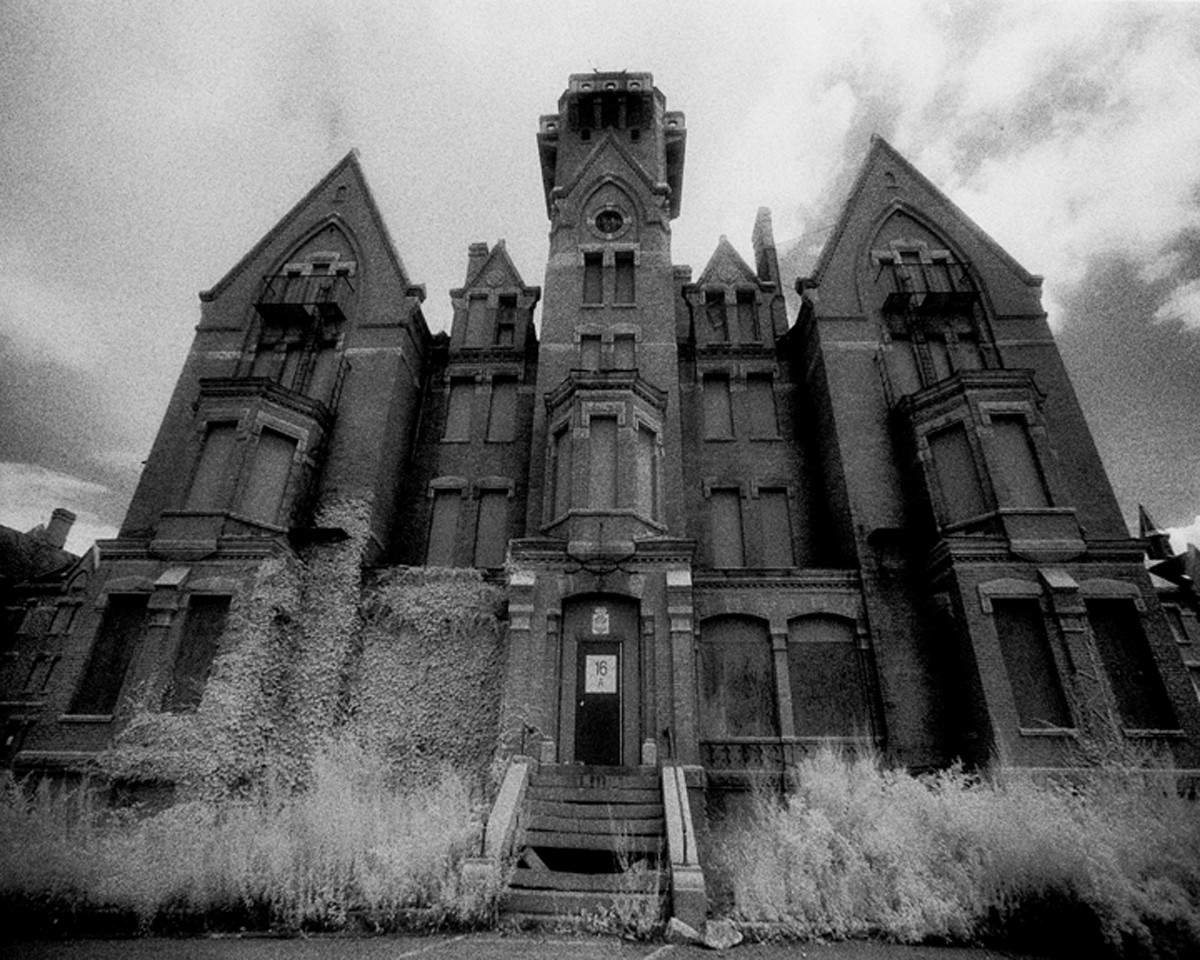This goes for things as well; dolls that are too lifelike to clowns in places where clowns should not be. What about places?
Yes, this ‘threat-ambiguity theory’ of creepiness also applies to places, according to Knox College psychology professor Francis McAndrew. Scary places lack what psychologists refer to as ‘legibility' - the ease with which a place can be recognized, organized into a pattern and recalled. A deep dark woods is going to be scarier than a meadow with a stream whose edges you can see.

Danvers State Insane Asylum, Massachusetts. Closed since 1992. Link: imgur.com/gallery/QjjKS
That may be why cinematic portrayal of haunted houses has remained consistent over time: they are filled with such discomfiting ‘supernormal stimuli’. They give us the creeps not because they pose a clear threat to us, but rather because it is unclear whether or not they represent a threat, and so our agent-detection mechanisms are on full alert.
Read Professor McAndrew's work on the architecture of creepiness at Aeon.


Comments